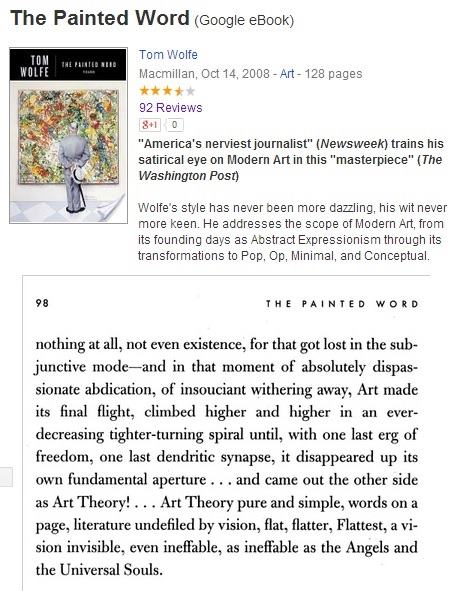The first story of "The Snow Queen, in Seven Stories"
by Hans Christian Andersen (1845) (see yesterday morning)—
|
Story the First,
Which Describes a Looking-Glass
and the Broken Fragments
You must attend to the commencement of this story, for when we get to the end we shall know more than we do now about a very wicked hobgoblin; he was one of the very worst, for he was a real demon. One day, when he was in a merry mood, he made a looking-glass which had the power of making everything good or beautiful that was reflected in it almost shrink to nothing, while everything that was worthless and bad looked increased in size and worse than ever. The most lovely landscapes appeared like boiled spinach, and the people became hideous, and looked as if they stood on their heads and had no bodies. Their countenances were so distorted that no one could recognize them, and even one freckle on the face appeared to spread over the whole of the nose and mouth. The demon said this was very amusing. When a good or pious thought passed through the mind of any one it was misrepresented in the glass; and then how the demon laughed at his cunning invention. All who went to the demon’s school—for he kept a school—talked everywhere of the wonders they had seen, and declared that people could now, for the first time, see what the world and mankind were really like. They carried the glass about everywhere, till at last there was not a land nor a people who had not been looked at through this distorted mirror. They wanted even to fly with it up to heaven to see the angels, but the higher they flew the more slippery the glass became, and they could scarcely hold it, till at last it slipped from their hands, fell to the earth, and was broken into millions of pieces. But now the looking-glass caused more unhappiness than ever, for some of the fragments were not so large as a grain of sand, and they flew about the world into every country. When one of these tiny atoms flew into a person’s eye, it stuck there unknown to him, and from that moment he saw everything through a distorted medium, or could see only the worst side of what he looked at, for even the smallest fragment retained the same power which had belonged to the whole mirror. Some few persons even got a fragment of the looking-glass in their hearts, and this was very terrible, for their hearts became cold like a lump of ice. A few of the pieces were so large that they could be used as window-panes; it would have been a sad thing to look at our friends through them. Other pieces were made into spectacles; this was dreadful for those who wore them, for they could see nothing either rightly or justly. At all this the wicked demon laughed till his sides shook—it tickled him so to see the mischief he had done. There were still a number of these little fragments of glass floating about in the air, and now you shall hear what happened with one of them.
|
"Was there more to come? Was I done?
I wondered if I had dreamed
the connectedness of Being
the night before, or if now, awake,
I dreamed distinctions.
I didn’t know where I was for an instant."
— "Alethia," by Charles Johnson, as
quoted by Eve Tushnet on Aug. 22, 2013
Tushnet on Johnson —
"Somebody–I hope a commenter will remind me who it was–
has suggested that the Left typically thinks in terms of an
opposition between oppression and liberation, whereas
the right typically thinks in terms of an opposition between
civilization and barbarism. I would reframe the latter opposition
as order vs. chaos; if we do that, it’s obvious that both
oppositions are unrelentingly relevant, yet few thinkers or artists
are able to hold both conflicts before our eyes at once.
I just finished Charles Johnson’s 1986 short-story collection
The Sorcerer’s Apprentice: Tales and Conjurations ,
a bag of broken glass which is equal parts liberationist and
reactionary, yearning for freedom and knuckling under to fatalism."
Related material —
|
Saturday Night Live, Dec. 11, 1976
Consumer Reporter: Alright. Fine. Fine. Well, we'd like to show you another one of Mr. Mainway's products. It retails for $1.98, and it's called Bag O' Glass. [ holds up bag of glass ] Mr. Mainway, this is simply a bag of jagged, dangerous, glass bits.
Irwin Mainway: Yeah, right, it's you know, it's glass, it's broken glass, you know? It sells very well, as a matter of fact, you know? It's just broken glass, you know?
Consumer Reporter: [ laughs ] I don't understand. I mean, children could seriously cut themselves on any one of these pieces!
Irwin Mainway: Yeah, well, look – you know, the average kid, he picks up, you know, broken glass anywhere, you know? The beach, the street, garbage cans, parking lots, all over the place in any big city. We're just packaging what the kids want! I mean, it's a creative toy, you know? If you hold this up, you know, you see colors, every color of the rainbow! I mean, it teaches him about light refraction, you know? Prisms, and that stuff! You know what I mean?
|
Tommy Lee Jones perhaps knows what Mainway means.
Kristen Wiig (see Aug. 22, 2013, in this journal) perhaps does not.
See also Tushnet on The Man in the High Castle as well as
Tommy Lee Jones and Hexagram 61.






